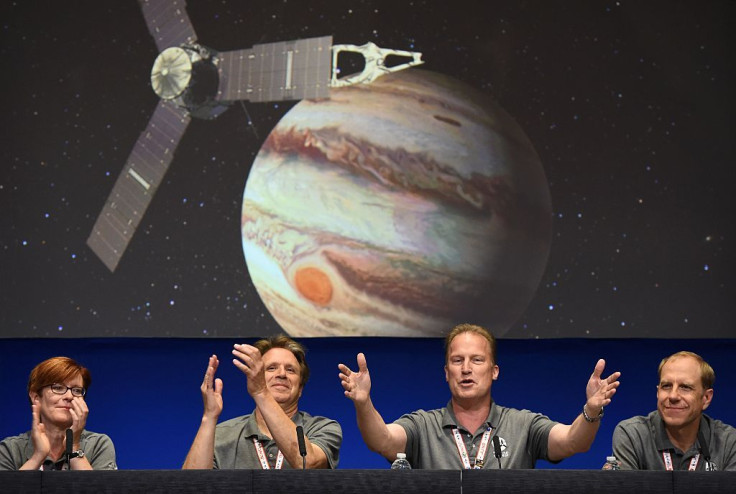Jupiter Moons Being 'Killed' By The Giant Planet?

Jupiter’s very powerful magnetic field seems to be causing some of its moons to crack.
According to the journal Nature Astronomy, the planet’s magnetic force which extends out to an average of 5 million kilometers, has enveloped some of its surrounding moons and affecting its surface. The icy surface of the moon Europa, in particular, is beginning to crack because of the planet’s powerful force.
Europa is believed to have a salty liquid ocean beneath the surface which helps conduct electricity. This is causing the rotating magnetic field to apply force on the surface and making the water underneath to move.
The studies were conducted by scientists Christophe Gissinger from École Normale Supérieure and Ludovic Petitdemange from the Laboratory for Studies of Radiation and Matter in Astrophysics and Atmospheres in Paris, who used information and measurements gathered from the Galileo spacecraft.
According to the report, Gissinger and Petitdemange noted that Jupiter has a very strong magnetic field that’s powerful enough to impact its moons. Europa’s underground ocean is reacting with the planet’s magnetic force and is likely creating a jet stream because of it. The jet stream is what’s causing Europa’s surface to crack.
To prove this, the researchers conducted numerical simulations which showed a jet stream forming along the moon's equator and flowing opposite Europa’s spin. The opposite flow is likely to be causing stress to the moon’s surface and causing it to crack.
“It will not slow down the entire moon because the tidal forces from Jupiter are huge and will keep Europa’s rotation the same, but it will create these cracks that we have seen,” Gissinger said.
What’s interesting is that the phenomenon could be used to study the discovery of life on planet Jupiter. The researchers suggested that Europa’s jet stream can be compared to the Gulf Stream back on Earth. The Earth jetstream is known to move important compounds that are vital to support life. If this is the case then there’s a chance that the same theory can be applied to Jupiter’s moon.
Further research to support this theory wouldn’t have to wait that long, however, as planned space missions to study the icy surface of Jupiter’s moon are likely to happen only in a few years. One of these missions is the European Space Agency’s JUICE mission, which is slated to launch in the year 2022. The main objective of the space project is to determine if it’s possible for Europa’s vast ocean system to support life.
© Copyright IBTimes 2024. All rights reserved.




















